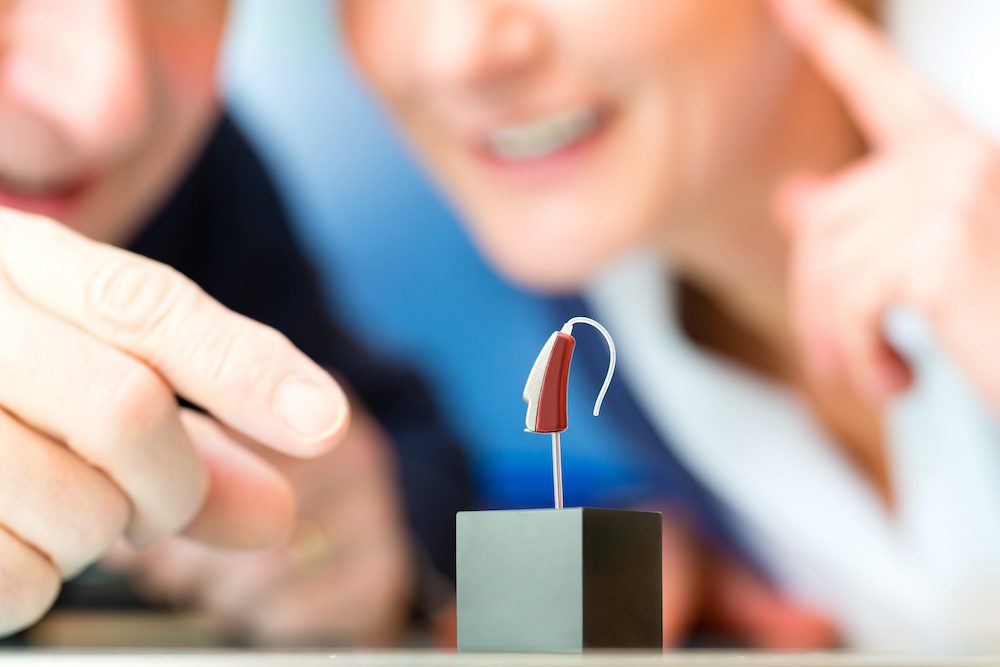Do I Need an Annual Hearing Test?
When you notice that you are squinting, you go to your eye doctor for a

By: admin | May 23, 2023
Hearing loss is something that many people experience, but thanks to modern technology, in many cases, a hearing aid can help with this and ensure better hearing for all who might need it. However, it wasn’t always like this; after all, hearing aids haven’t been around forever, and in the past, those who had hearing loss would not have had any help at all. Let’s look at the history of hearing aids and how they have evolved over time to help you get a better understanding not just of what you might be able to make use of now but how these new tools and innovations have come to be. Read on to find out more.
Many people will assume that hearing aids are a fairly modern creation and certainly something that would only have come about during the 20th century, perhaps. However, they – or rather hearing devices in general – actually date back much farther than you might expect, all the way to the 13th century, in fact.
Of course, these devices were not powered in any way and are vastly different from what someone might use today, but they worked well enough. The earliest hearing devices were made from animal horns, such as those from cows and rams. They were hollowed out and used as a kind of hearing trumpet or amplifier. This would not necessarily have helped those who had more severe hearing loss, but for mild hearing loss, there is no reason to think that this idea wouldn’t have been a revelation at the time.
It wasn’t until the 17th century that the next big innovation in hearing devices took place, and the reality is that it wasn’t much of an innovation at all. Taking the idea of the animal horn used as an amplifier, specialists created a hearing trumpet. This device was first created in 1634, and it took the idea of the animal horn trumpet and made it better. The funnel end of the device would collect the sound, and the narrower end, which was inserted into the ear, would channel that sound to the listener. The sound wasn’t amplified, but it did make it easier to pick out specific conversations in crowded spaces, for example.
By the time we reach the 18th century, these ear trumpets were extremely popular. They were made from different metals or wood, there were collapsible versions and they even came in different sizes to ensure users could make the most of them. Headbands were added so that the user didn’t have to hold the device anymore. It was at this time that these ear trumpets began to be commercially produced by Frederick C. Rein.
Of course, the discovery of electricity and how it could be used in the home changed many things, including hearing aids. In 1898, Miller Reese Hutchison harnessed the power of electricity and created the first electronic hearing aid. This was called the Akouphone. It was portable, and it worked through a carbon transmitter, much like the newly invented telephone.
The transmitter meant that not only could the noise be funneled to the listener, but it could also be amplified. Now those with more serious hearing loss could also benefit from a hearing aid – the electronic signal boosted the sound, and in doing so, the number of decibels was increased, leading to better hearing. Although most of the technology used in this first electronic hearing aid is seen as old-fashioned by today’s standards, at the time, it was seen as a miracle helper for those with hearing loss and it was a big leap forward in developing better hearing devices through the following years.
During the 20th century, many new ideas were trialed, and many new devices were unveiled – this was a crucial time in the advancement of hearing aid technology. One of the first ideas, which came about in 1921, was vacuum tube technology which allowed sound to be increased to as many as 70 decibels.
This idea lasted until 1948 when transistor hearing aids were invented. These were very popular as they were smaller than anything that had come before, and the sound was crisper. It meant that hearing aids could be worn inside or behind the ear and were therefore less noticeable. This was also the time period when hearing aids went from analogue to digital in the 1980s.
Today, hearing aids make use of all the most modern technology at our disposal, including better digital tech, programmable software and smart devices that can be linked to phones and tablets. Hearing aids have come a long way since those first animal horns, and if you feel it’s time you updated yours or spoke to an expert about hearing loss, please don’t hesitate to get in touch with the Hearing Wellness Centre at (844) 663-9433.
Tags: history of hearing aids

When you notice that you are squinting, you go to your eye doctor for a
By: admin | October 18, 2022

It can be tough to get used to wearing hearing aids. They are a big change
By: admin | September 30, 2022

It can be difficult to explain hearing loss to your loved ones. They may
By: admin | August 29, 2022
